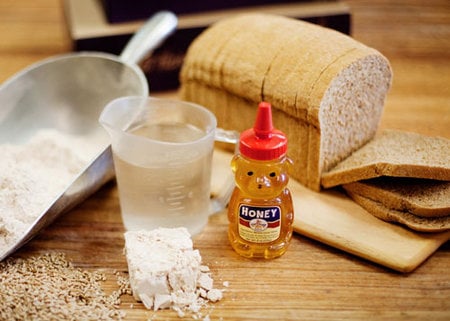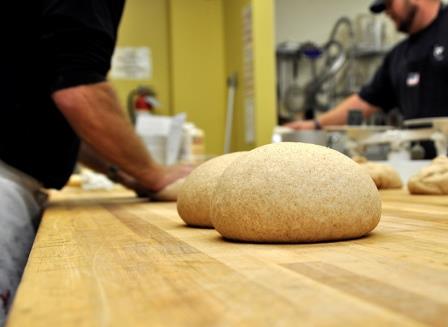I am proud of who we are at Great Harvest. We mill our own whole grain flour daily in each of our bakeries. Our bakers come in at the crack of dawn to allow enough time to hand make fresh bread from scratch, daily. Our bread has extraordinary texture, volume, nutrition, and flavor. And our bread stays unbelievably fresh for up to 10 full days on the kitchen counter. But what I find most remarkable about all of this is that we achieve all of these things with only five simple ingredients. Yeast. Fresh whole grain flour. Honey. Water. And salt.

While some believe in the old adage that more is better, when it comes to ingredients, we believe that quality is greater than quantity. We want people to take a bite of our bread and say, “Mmmmm… I can taste the honey and the freshness of the whole grain flour,” as opposed to reading a label and questioning, “What is azodicarbonamide and sodium stearoyl lactylate?”
Take a look at the ingredients list on a loaf of honey whole wheat bread from the grocery store, or even some other bakeries. You can often find names such as mono and diglycerides, calcium proponate, mono calcium phosphate, DATEM, sodium stearoyl lacytylate, and azodicarbonamide listed on the label. These ingredients are added for various reasons, none of which we find very compelling. By making bread the old fashioned, slow food way, we can avoid these unnecessary chemical additives. Allow me to explain what function each of these bread additives plays in your mass-produced grocery store bread:
Dough Strengtheners/Conditioners
Function: Used to strengthen the dough so that greater volume and more uniform structure and texture can be achieved.
Examples include: Azodicarbonamide, Calcium or Sodium Stearoyl Lactylate, Calcium or Sodium Stearoyl Fumerate, Calcium Bromate, Calcium Peroxide, Cysteine, L-Cysteine, Potassium Bromate.
Preservatives
Function: Improves the shelf life of bread by inhibiting mold growth.
Examples include: Calcium or Sodium Propionate.
Emulsifiers
Function: Used to make bread softer, improve volume and texture, and also to prevent the bread from going stale.
Examples include: Mono and Diglycerides, Diacetyl tartaric acid ester of monoglycerides (DATEM).
Although these common additives may get the job done with less hassle, we prefer to rely on our tedious old world style traditional bread making techniques which let the natural goodness of our ingredients shine through. We love making bread that we feel good about. And you can feel good about eating it with your loved ones. Who needs the additives? We’ll pass, and we hope you do too!

Great Harvest is real people making real... Bread. The way it ought to be.
If you enjoyed this, you may want to read these related posts:
- Whole Grain Breads Are Full of Nutrition, Not Marketing
- What Do All Those Food Label Claims Actually Mean?
- Why Great Harvest is...Bread. The way it ought to be.
Get more detailed nutritional information
about Great Harvest's whole grain breads here:




